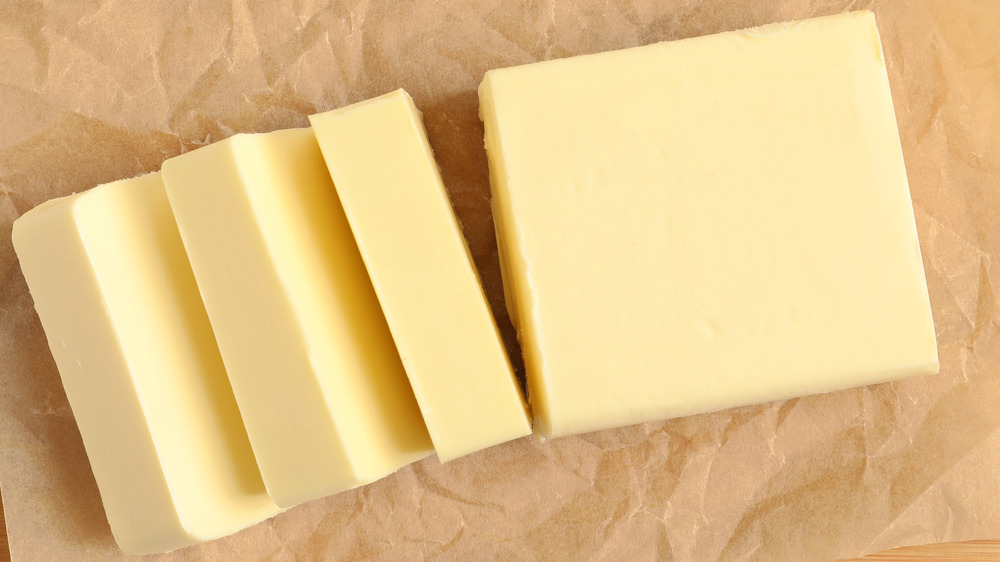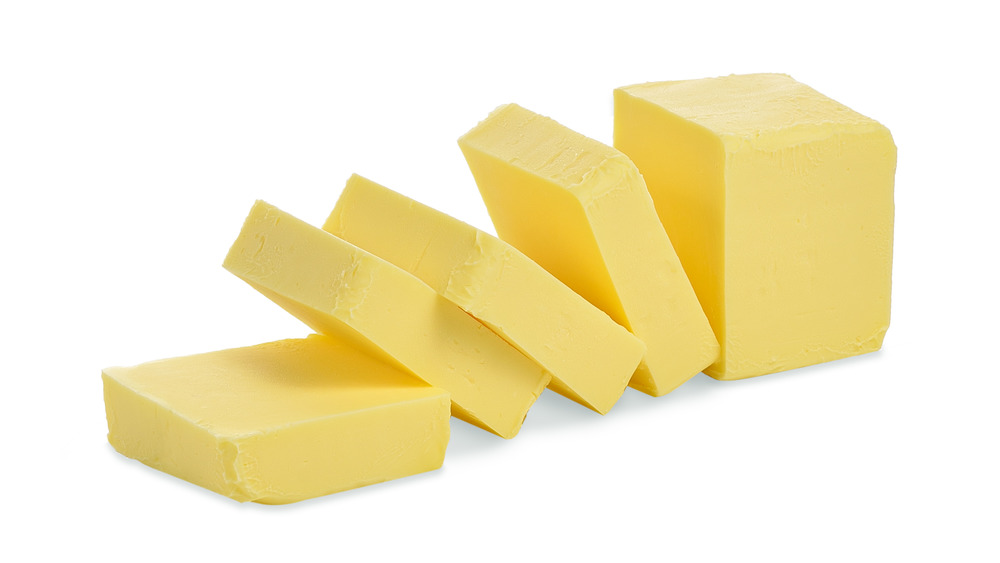The Strange Difference Between West And East Coast Butter
Some may find the boast OXO makes about its Good Grips Wide Butter Dish — that it fits multiple sizes of butter — a strange one. "OXO's Butter Dish is unique in that it can accommodate both stick sizes, no matter where you live, with measurement markings for each style," it writes on its website.
The two types of butter to which the brand refers are the East Coast and West Coast butter sticks. For many, the fact that butter changes enough to be differentiated as you move from one side of the country to the other may come as a shock. The difference, however, is quite simple. Sticks of butter on the East side of the Rocky Mountains are longer and thinner while the West Coast boasts stumpier butters. However, OXO reassures, despite the visual difference, both styles of butters have a volume of eight tablespoons and weigh four ounces. They only differ in the dimensions that mass takes.
Butter making equipment dictated the shape of butter sticks on both coasts
The reason why butter sticks have evolved differently on either side of the Rocky Mountains is due to the history of equipment used to make the butter.
When NPR's Marketplace learned in 2014 that butter varies, the outlet sought out Dr. John Bruhn, who used to work at the University of California Davis' Dairy Research and Information Center. According to Dr. Bruhn, the difference in butter shapes began because the West Coast lagged when it came to developing a butter making industry.
Originally, as MyRecipes writes, butter was sold in one-pound blocks. However, a shipment to New Orleans asked if the butter could be divided into four chunks of four ounces, which proved a popular enough change that it is now how butter is sold in the supermarket. Soon Elgin butter, the butter-making giant of the late 19th and early 20th century, designed a machine to package butter in the four stick arrangement.
As Dr. Bruhn said, though, the West didn't get into butter making until later, specifically by the 1960s. By that point, the Elgin butter packers were no longer on the market, so the industry purchased newer tools that produced a more compact butter stick.

